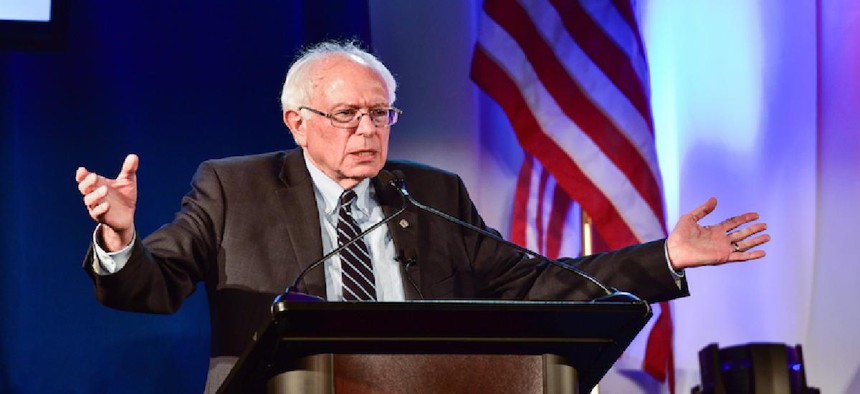We’ve been hearing a lot from Sen. Bernie Sanders recently about energy policy. Listening to his rhetoric at last week’s debate, I’m reminded of Sen. Patrick Moynihan’s wise words: “Everyone is entitled to their own opinion, but not their own facts.”
Sanders’ approach might seem more environmentally responsible, but his position is not backed by a single proposal that would move our nation toward a carbon-free future while keeping our lights on. Here’s the reality: contrary to what Sanders says, natural gas is the most viable, abundant and economical solution to meet future electricity needs and New York’s clean energy goals.
As New Yorkers consider their presidential options on primary day, let’s establish the facts around how we meet our clean energy goals, do some simple math, and consider the economics.
First, what are our clean energy goals? The Clean Power Plan, proposed by President Obama last year, challenges the United States to reduce its carbon emissions by nearly one-third by 2030. Every state has a target under this plan, and New York must reduce its carbon pollution from the power sector by 10 percent. It’s a tougher goal than you’d think. In fact, New York faces a real challenge to meet it.
Why? Let’s look at the numbers. First, over the next decade and a half, demand for power is projected to increase by 14 percent. Second, New York’s James A. FitzPatrick nuclear energy plant in Oswego will close in 2017, eliminating enough carbon-free power from the grid to serve 650,000 homes. And Gov. Andrew Cuomo wants to close New York’s three remaining coal plants by 2020, which is notable in terms of reducing carbon pollution but also removes energy sources that power 416,000 homes every year.
What does this mean? Research conducted as part of a broader study underway by the Laborers’ International Union of North America has found that New York will face a drastic energy shortfall of 29 million megawatt-hours of electricity, or the equivalent of lights out for 2.4 million New York homes.
How do we make up this energy shortfall while also meeting clean energy goals? Renewables certainly must play a part, but are not nearly enough by themselves. To fill the 21 percent deficit in the power sector alone, New York would need 100,000 acres of solar panels – or an area six times the size of Albany.
Sanders says he wants a clean energy future, yet he rejects the best method for producing cleaner-burning local natural gas and has no plan to replace the carbon-free power from the Indian Point nuclear energy facility – which supplies New York City with 25 percent of its electricity. He only wants investments in solar and wind, which, while promising in the future, do not produce energy when the sun doesn’t shine and the wind doesn’t blow. In fact, Sanders’ own campaign website doesn’t mention how we will power New York, and for that matter, the country, while waiting for his clean-energy utopia. ?
It’s time for a fact-based conversation on New York’s energy needs. And contrary to what Sanders says, natural gas is the most viable, abundant and economical solution to meet future electricity needs and the carbon emission reduction targets. Bottlenecks in New York’s approval process are holding up critical natural gas projects, such as the Constitution pipeline and Access Northeast – projects that will help New York meet its clean energy needs.
Fully two-thirds of New York’s clean energy requirements could be met by using natural gas; without it, there is not a realistic scenario for meeting these goals. It’s time for New Yorkers to ask Sanders how he plans to keep the lights on.
Terry O’Sullivan serves as the general president of the Laborers’ International Union of North America.
NEXT STORY: Staff predictions for New York primary day


